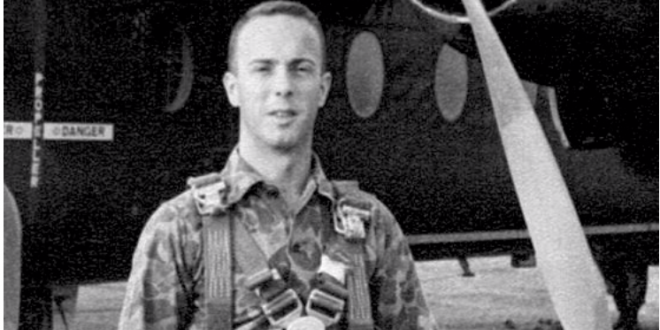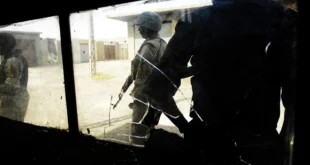Sometime in 1965, Navy SEAL James Hawes landed in the Congo with cash stuffed in his socks, morphine in his bag, and a basic understanding of his mission. He would recruit a mercenary navy and suppress the Soviet and Chinese-backed rebels engaged in guerrilla movements against a pro-Western government. He did not know that a few miles away, Che Guevara was attempting to export his revolution.
In Cold War Navy SEAL, Hawes tells the story of a clandestine chapter in US history. A distinguished Navy frogman and later a CIA contractor, Hawes began his journey as an officer in the newly formed SEAL Team 2, which then led him to Vietnam in 1964 to train hit-and-run boat teams who ran clandestine raids into North Vietnam.
The CIA later tapped Hawes to deploy to the Congo, where he would be tasked with creating and leading a paramilitary navy on Lake Tanganyika to disrupt guerrilla action in the country. Hawes recalls recruiting and managing some of the most dangerous mercenaries in Africa, battling rebels with a crew of anti-Castro Cuban exiles, and learning what the rest of the intelligence world was dying to know: the location of Che Guevara.
Shortly after his book was published in 2018, Hawes spoke to Soldier of Fortune. Here’s what he told us.
- Why did you wait so long to write this book ? I honored the SEAL Ethos of the quiet professional – “I do not advertise the nature of my work or seek recognition for my actions.” After fifty years all relevant government documents were declassified so the operation could be told in its entirety without reservations or obfuscations. Also, the Cubans’ critical contributions were never recognized by our government. Their bravery, loyalty, and success deserve recording for posterity and for their families; and I am the only living person who can tell this story accurately. Any historian will be required to deal with a first-hand account regardless of his/her political slant or prejudice; and it was a Cold War success conceived and executed by men trying to do the right things for the right reasons.
- How many Americans were involved in your operation ? In Congo, I was the Lone Ranger for most of the time except for a period when Rene Gough (“Gooch”), an old Frog, came out of retirement to join me. He was as fine a man as God ever made and was enormously valuable until he was killed. Of course, I had backup support in the Embassy in Kinshasa, about 1,800 miles of jungle to the west, and back at Headquarters in Washington, DC; all willing, but far away.
- What is the back story of the “Congo Cubans?” These men were fervent anti-Communists, Veterans of the Bay of Pigs and subsequent anti-Castro operations. They were committed to fighting Communism anywhere it could be confronted and had proven their courage, dedication and loyalty in many operations against Castro. Their professionalism, pride in performance, behavior, devoted friendship, and loyalty to the US Government cannot be exaggerated. They had had a prior trust relationship with the man who was Deputy Chief of the Maritime Branch in the Special Operations Division. That trust was so strong that it was conveyed to me without any reservations from the Cubans.
- What experience and training prepared you for this mission ? Primarily, it was my SEAL training. Prior to this mission I had been the first SEAL Team-2 officer to be permanently ordered to Vietnam, specifically, MACV/SOG to be one of the original officers to stand up the Naval Advisory Detachment (“NAD”) as part of the transfer of SOG (known prior to the DOD takeover as Studies and Observations Group) from CIA to DOD, and assume OpPlan-34A, the operations into North Vietnam. This was the most politically sensitive operation in Vietnam at the time. I was the Training Officer and the Assistant Operations Officer for the boat and commando operations into the North. This put me in position of being one of two officers with Swift Boat experience (we had the first three Swifts in Vietnam, taken over from CIA, as part of the turnover). That Swift boat experience was critical for selection for the Congo mission.
- How did the Congo opportunity with the agency come to you ? The Chief of the Maritime Branch was a former commander of the East Coast Underwater Demolition Teams, so it was easy for him to validate me in the small SEAL community. I was recommended to him by the only other SEAL with Swift Boat experience. Everything I had done in Vietnam was applicable in some way for the Congo mission. And I was keen to do it.
- What was the biggest obstacle you faced in building the Congo Navy? I was not in the mercenary’s chain of command and I did not pay them. But it was essential that I train them to be sailors, operate our boats and ensure that my operations be executed according to my orders. Making that happen was a matter of trusting my instincts on how to deal with the mercenaries, having the benefit superb SEAL training, and being lucky. But mostly, it could not have happened without the Cubans as a training cadre.
- How were you supervised? No supervision. My in-country boss was 1,800 miles across the jungle at the Embassy in Kinshasa. No voice communication to Kinshasa. Critcal messages were sent via telegraph encrypted from one-time pads. Approximately every other day a supply plane would arrive, so that written messages could be delivered and carried back.
- How were you, your personnel, and your boats armed ? The Swifts had .50’s bow, stern, port, and starboard; a .57 mm recoilless rifle tub, and .60 mm mortar off of sandbags plus a board on the fantail for illumination. The PT’s had a .30 cal machine gun forward and shoulder-fired 3.5 inch rocket launchers aft. The Ermans was armed with captured Russian machine guns and a .75 mm recoilless rifle on the fantail. I carried a Walther PPK and n AR-15. The mercenaries had Belgian FN’s.
- What was it like for you in the early days, after the formation of the SEAL Teams? SEAL Teams 1 & 2, respectively, were formed 1 January 1962. I completed training in July, 1963. There were ten officers and fifty enlisted on each SEAL Team, all from the Underwater Demolition Teams, as the basic training was identical. Essentially, the secondary missions of the UDT’s became the primary missions of the SEAL’s. Eventually, all the UDT’s became SEALs. The Teams were the neglected stepchildren of the navy in those days, kept alive by dedicated Frogcommanders who cared more about the Teams than promotions, and a few far-sighted Admirals. Today’s preparation for missions is much more professional with the very best training possible. In the early days operational requirements and only a relative handful of SEALS dictated that our training was “on the job.”
 Soldier of Fortune Magazine The Journal of Professional Adventurers
Soldier of Fortune Magazine The Journal of Professional Adventurers






